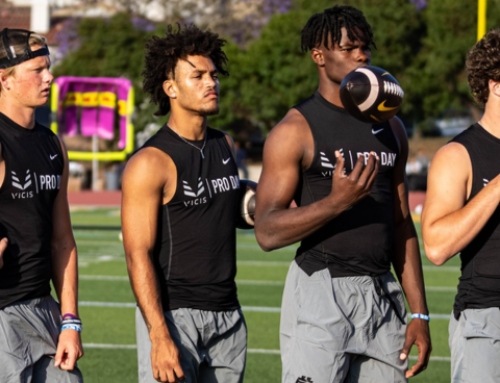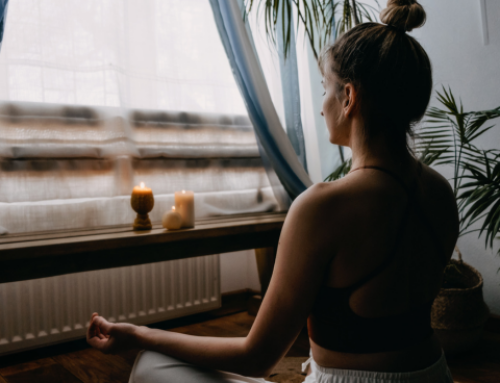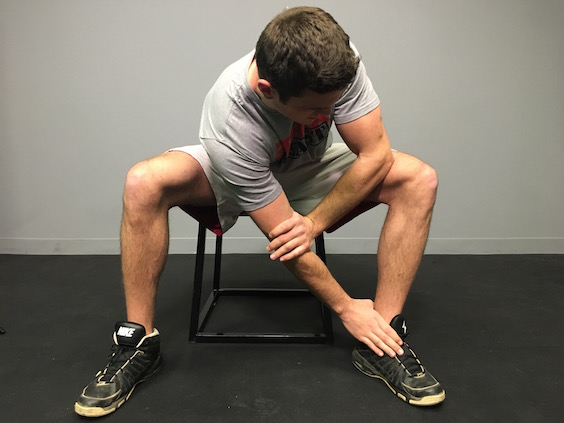To a young athlete, going to bed before 10 p.m. sounds like a punishment.
Those bedtimes are reserved for babies and grandparents. Why would an active, healthy athlete ever have to hit the hay that early?
One word: performance.
The impact of sleep on performance is staggering, and elite athletes have taken notice. The New York Times recently detailed how serious the Seattle Seahawks take their sleep.
Roughly 40 players on the team voluntarily wear Readibands, a wristband equipped with motion sensors that calculate how long and how deeply they sleep. The information is sent directly to the players’ smartphones and also shared with the team. Based on that data, the team is able to tweak training, practice and travel schedules. The benefits of the Seahawks’ sleep tracking have been so significant that many of the team’s players now head to bed before 10 p.m. They’re not alone. In 2014, Tom Brady revealed that he regularly goes to bed at 8:30 p.m.
“I do go to bed very early because I’m up very early. I think that the decisions that I make always center around performance enhancement, if that makes sense,” Brady told WEEI.
So, how exactly can a good night’s sleep enhance your performance?
RELATED: The Many Athletic Benefits of Sleep
A 2011 study in the journal SLEEP found that Stanford basketball players were able to dramatically improve their on-court performance simply by increasing their total amount of sleep time.
Per Standford Medicine:
The researchers asked the players to maintain their normal nighttime schedule (sleeping for six to nine hours) for two to four weeks and then aim to sleep 10 hours each night for the next five to seven weeks. During the study period, players abstained from drinking coffee and alcohol, and they were asked to take daytime naps when travel prohibited them from reaching the 10 hours of nighttime sleep.
At the end of the 10-hours-a-night period, players ran 282-foot sprints (equivalent to running the full length of the court three times) at an average of 15.5 seconds. That was a significant improvement over the average 16.2 seconds they achieved before the sleep extension. But perhaps even more surprising was the dramatic increase in shooting accuracy. More sleep helped the players increase their free-throw percentage by an average of 9 percent and their 3-point percentage by an average of 9.2 percent. Reported fatigue levels also decreased and players reported improved performance in practice and games.
“If you told an athlete you had a treatment that would reduce the chemicals associated with stress, that would naturally increase human growth hormone, that enhances recovery rate, that improves performance, they would all do it,” Dallas Mavericks trainer Casey Smith, whose team also employs the Readiband, told ESPN. “Sleep does all of those things.”
Getting 9-plus hours of sleep a night might sound impossible, especially for student-athletes who are forced to juggle training, practices, games, school and social life. If you aren’t able to get at least 9 hours of sleep overnight, you can help yourself by taking naps throughout the day.
But the sheer quantity of sleep isn’t all that counts. Quality matters. Deeper sleep is more restorative and is key to waking up feeling well-rested and refreshed. But what sorts of things can you do to improve your sleep quality?
You can take a number of small, simple steps to ensure you get a better night’s sleep. One of them is to simply adhere to a regular bedtime and wake-up time. Another is to avoid blue light—the type of light often emitted by electronics—during the lead-up to sleep. Blue light has been found to suppress melatonin, a hormone that helps control sleep cycles. If you’re the type who likes to go on your iPhone before bed, we recommend using “Night Shift” mode. For other tips on how to get a great night’s sleep, read our 18 Rules for Better Sleep article.
If you’re interested in tracking your sleep, you have a wide variety of options at your disposal. If you own a fitness tracker such as a Fitbit or Jawbone, there’s a good chance it’s capable of tracking your sleep. Also, a wide variety of smartphone apps can be used to track your sleep, such as Sleep Cycle and Sleep Time+. Taking measures to monitor your sleep quality is a great idea, as it can help you approach sleep with a more competitive mindset.
RELATED: What I Learned From Using Sleep Tracking Technology
RECOMMENDED FOR YOU
MOST POPULAR
To a young athlete, going to bed before 10 p.m. sounds like a punishment.
Those bedtimes are reserved for babies and grandparents. Why would an active, healthy athlete ever have to hit the hay that early?
One word: performance.
The impact of sleep on performance is staggering, and elite athletes have taken notice. The New York Times recently detailed how serious the Seattle Seahawks take their sleep.
Roughly 40 players on the team voluntarily wear Readibands, a wristband equipped with motion sensors that calculate how long and how deeply they sleep. The information is sent directly to the players’ smartphones and also shared with the team. Based on that data, the team is able to tweak training, practice and travel schedules. The benefits of the Seahawks’ sleep tracking have been so significant that many of the team’s players now head to bed before 10 p.m. They’re not alone. In 2014, Tom Brady revealed that he regularly goes to bed at 8:30 p.m.
“I do go to bed very early because I’m up very early. I think that the decisions that I make always center around performance enhancement, if that makes sense,” Brady told WEEI.
So, how exactly can a good night’s sleep enhance your performance?
RELATED: The Many Athletic Benefits of Sleep
A 2011 study in the journal SLEEP found that Stanford basketball players were able to dramatically improve their on-court performance simply by increasing their total amount of sleep time.
Per Standford Medicine:
The researchers asked the players to maintain their normal nighttime schedule (sleeping for six to nine hours) for two to four weeks and then aim to sleep 10 hours each night for the next five to seven weeks. During the study period, players abstained from drinking coffee and alcohol, and they were asked to take daytime naps when travel prohibited them from reaching the 10 hours of nighttime sleep.
At the end of the 10-hours-a-night period, players ran 282-foot sprints (equivalent to running the full length of the court three times) at an average of 15.5 seconds. That was a significant improvement over the average 16.2 seconds they achieved before the sleep extension. But perhaps even more surprising was the dramatic increase in shooting accuracy. More sleep helped the players increase their free-throw percentage by an average of 9 percent and their 3-point percentage by an average of 9.2 percent. Reported fatigue levels also decreased and players reported improved performance in practice and games.
“If you told an athlete you had a treatment that would reduce the chemicals associated with stress, that would naturally increase human growth hormone, that enhances recovery rate, that improves performance, they would all do it,” Dallas Mavericks trainer Casey Smith, whose team also employs the Readiband, told ESPN. “Sleep does all of those things.”
Getting 9-plus hours of sleep a night might sound impossible, especially for student-athletes who are forced to juggle training, practices, games, school and social life. If you aren’t able to get at least 9 hours of sleep overnight, you can help yourself by taking naps throughout the day.
But the sheer quantity of sleep isn’t all that counts. Quality matters. Deeper sleep is more restorative and is key to waking up feeling well-rested and refreshed. But what sorts of things can you do to improve your sleep quality?
You can take a number of small, simple steps to ensure you get a better night’s sleep. One of them is to simply adhere to a regular bedtime and wake-up time. Another is to avoid blue light—the type of light often emitted by electronics—during the lead-up to sleep. Blue light has been found to suppress melatonin, a hormone that helps control sleep cycles. If you’re the type who likes to go on your iPhone before bed, we recommend using “Night Shift” mode. For other tips on how to get a great night’s sleep, read our 18 Rules for Better Sleep article.
If you’re interested in tracking your sleep, you have a wide variety of options at your disposal. If you own a fitness tracker such as a Fitbit or Jawbone, there’s a good chance it’s capable of tracking your sleep. Also, a wide variety of smartphone apps can be used to track your sleep, such as Sleep Cycle and Sleep Time+. Taking measures to monitor your sleep quality is a great idea, as it can help you approach sleep with a more competitive mindset.
RELATED: What I Learned From Using Sleep Tracking Technology











